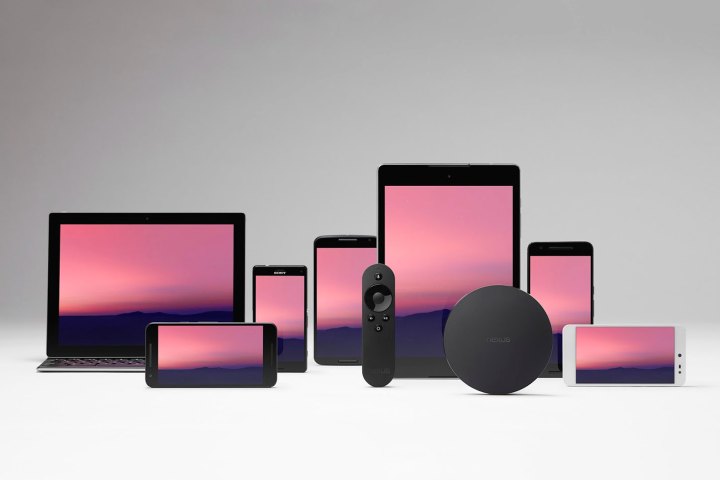
What’s new in Android N? Here’s what we know so far. Get ready, because we’ll see the final launch of Android N some time late in the summer.
You can help name Android N
We’re not sure what flavor the new update will come in (Nutella? Nougat?), and neither is Google, therefore it has decided to ask you to help out. If you’ve got a good idea, then submit it to android.com/n, or send it out on social media using the hashtag #NameAndroidN. Google’s not silly though, it has already said it’s going to make the final decision.
Virtual reality and Daydream
Google says virtual reality will be a core part of Android N, and will introduce a new app called Daydream, plus a new reference design headset and Wii Remote-style controller.
Daydream will provide a very Samsung Gear VR-like home screen for Google’s new VR mode, which will give access to a suite of new VR-focused apps including Google Play, and YouTube. A variety of hardware manufacturers are working on Google’s VR products, and the first are expected in the fall.
Vulkan

The new version of Android N introduces a new “3D rendering API,” called Vulkan which Google says offers a “significant boost in performance for draw-call heavy applications.” Vulkan’s reduction of CPU overhead allows some synthetic benchmarks to see as much as 10 times the draw-call throughput on a single core as compared to OpenGL ES,” the search giant said in a blog post.
What it means for you is better graphics with less pressure on the processor, which means lower battery consumption. However, it does need to be exploited by developers inside games, so it won’t be a universal improvement.
Google has also tweaked Android Runtime, and the JIP Compiler. These technical changes are great for
Security and updates

Security will be strengthened in Android N, with new file-based encryption systems, and a hardened media framework, making the operating system more secure than before.
The really exciting changes are in the software update side. Android N will seamlessly download and apply future updates, all without any help from you. When you reboot your phone, it’ll apply the update, and won’t even need your passwords to be entered when it restarts. Google has been using a similar system on its Chromebook computers, but this is the first time we’re seeing it on mobile.
Launcher, multi-tasking, and multi-window support

Android N now has launcher shortcuts — which means you can set specific shortcuts (3 to 5) within any app that implements them to quickly perform actions. You can add the shortcuts to your home screen for even faster access.
“These shortcuts contain an Intent into specific points within your app (like sending a message to your best friend, navigating home in a mapping app, or playing the next episode of a TV show in a media app),” said Google.
The familiar open app screen accessed using the Recents (recent apps) key is going through some changes. In Android N, it will remove unused apps automatically, keeping the list set to the last seven apps used. The ‘clear all’ button has been relocated to the top of the app list, too. Additionally, a double tap of the Recents key quickly takes you to the last app used, while a long press opens new multi-tasking option. Here, you can run two apps at the same time in a split screen mode. On Android TV, a picture-in-picture mode will feature. The third multi-window mode is called freeform, and it basically allows for multiple apps to float around in windows, the same way they would on a desktop computer. This mode is particularly useful for tablets with larger displays.
Emoji Unicode 9 support

Emojis of people now look more human in Android, including support for skin tone variations, and Google recommends keyboard and messaging app developers begin incorporating these new emojis into their apps.
There’s also support for Unicode 9 glyphs, “like the bacon, selfie, and face palm” emojis.
Other changes
Of course, apart from adding new features, the Developer Preview 2 also adds some changes to existing APIs in Android N — such as how developers can now specify a “separate minimum height and minimum width” for multi-window support. You can find more about the changes here.
Google has also squashed a few bugs, such as an issue that didn’t allow users to “connect to hidden Wi-Fi networks, Multi-window pauses, and Direct Reply closing an open activity.”
The update should be rolling out through an over-the-air update if you opted in your eligible device in the Android Beta program. Eligible devices are the Nexus 6, Nexus 5X, Nexus 6P, Nexus 9, the Pixel C, and General Mobile’s 4G. The Nexus Player will receive the update in a few days.
If not, you can always download and flash the update manually, but as Google reminds us, “the build is not yet optimized for performance and battery life.” In other words, be cautious about installing this early preview on your main device. If you’re willing to take that risk, we’ve got handy instructions on how to flash updates here.
Editors' Recommendations
- Google has a magical new way for you to control your Android phone
- Android is getting an AI overhaul. Here’s what it looks like
- A new Android 14 update is here — but you still shouldn’t download it
- The Oppo Find N will be among the first foldables to try Android 13 Beta 1
- Google adds more iMessage features to Android’s Messages app


